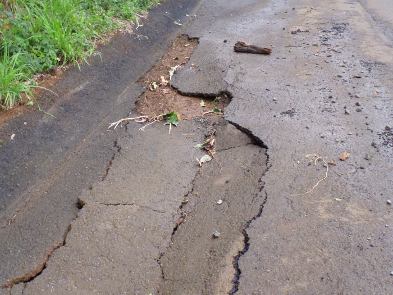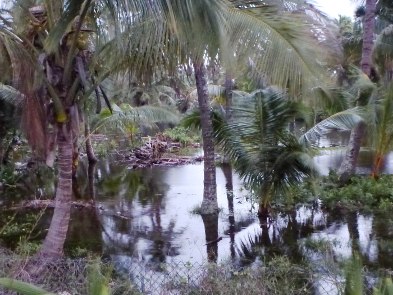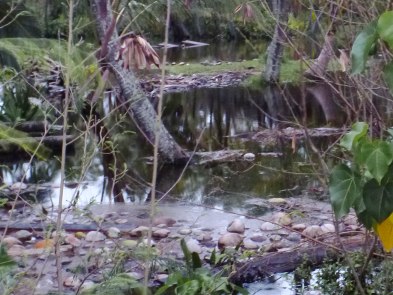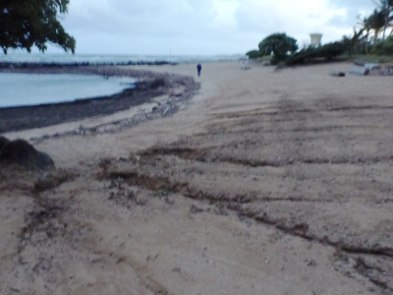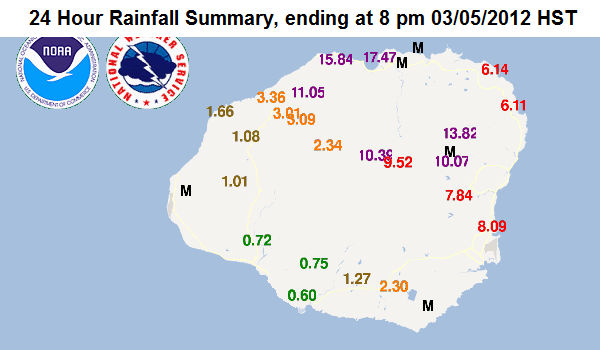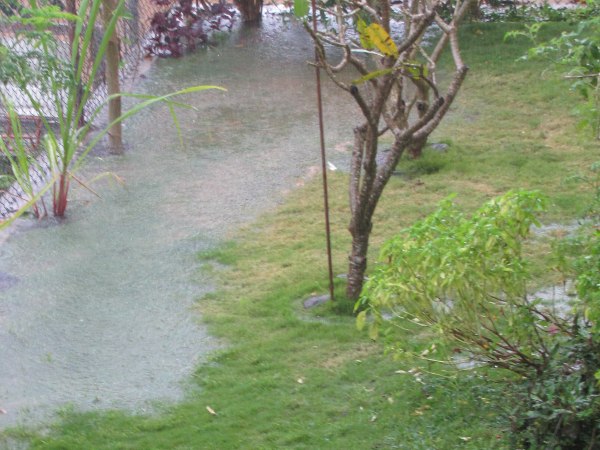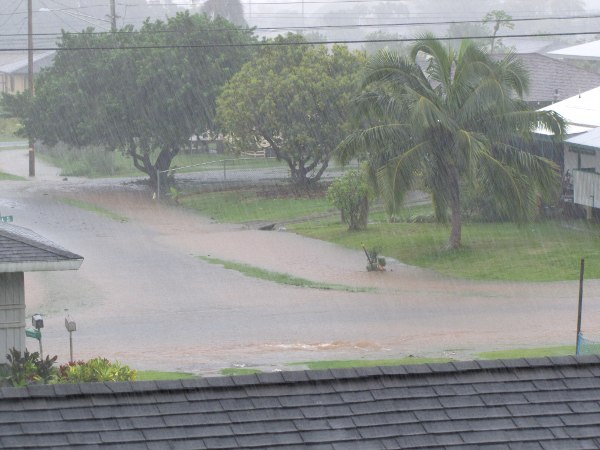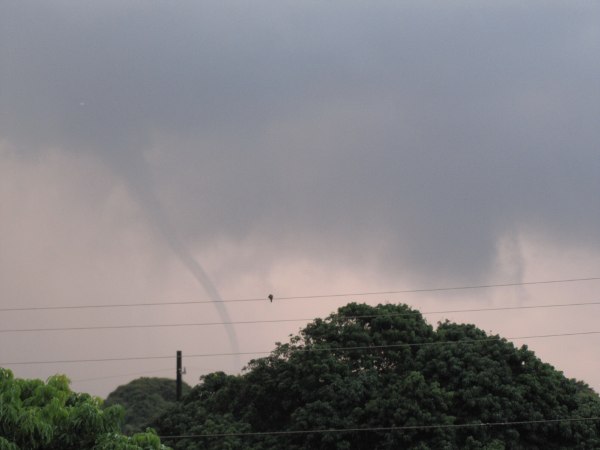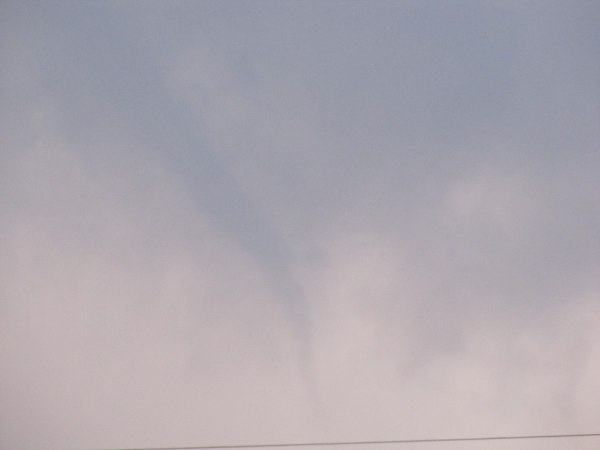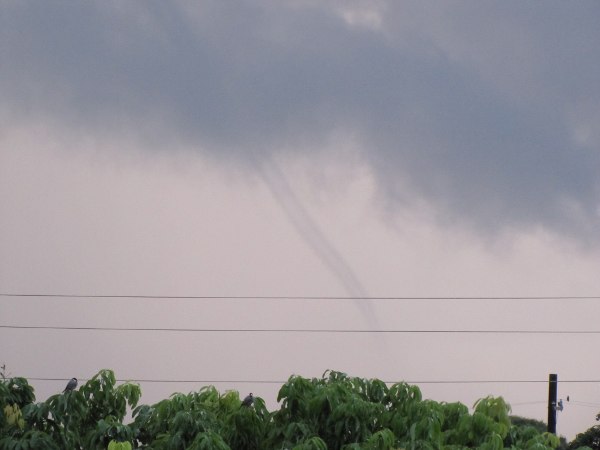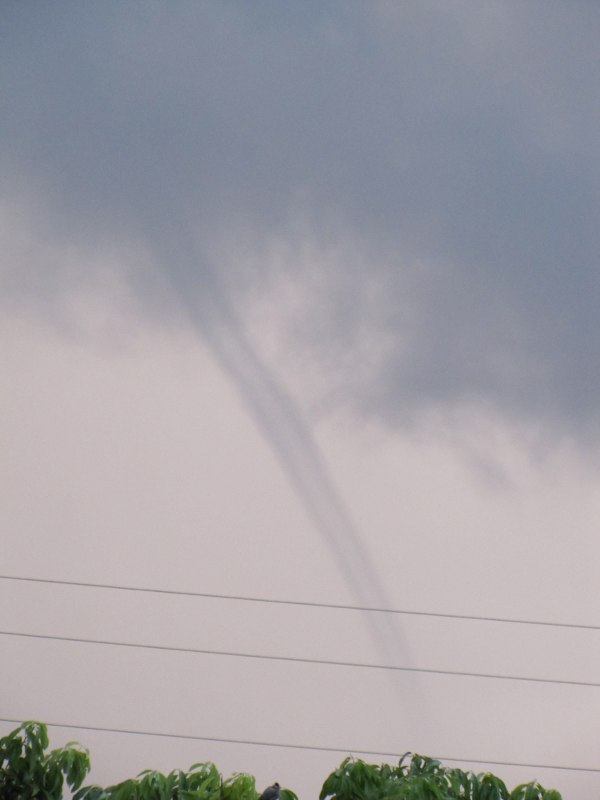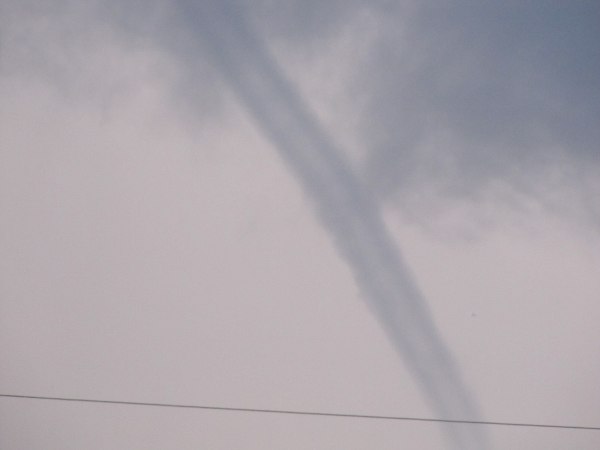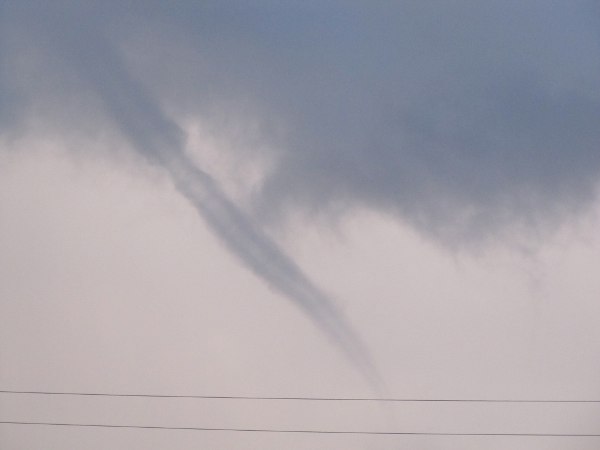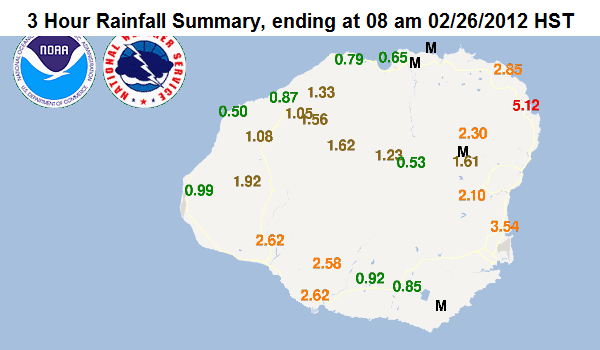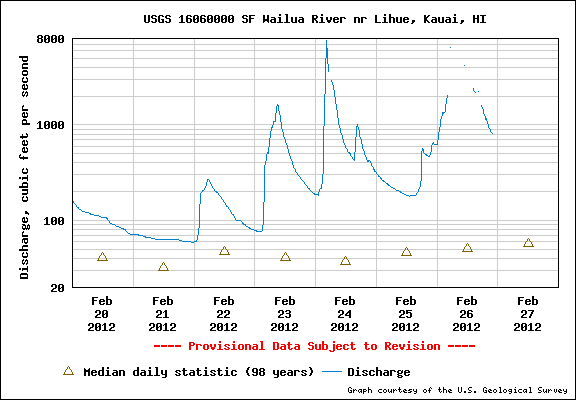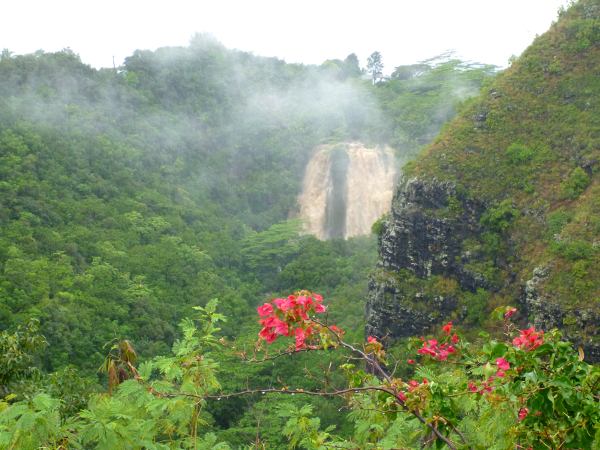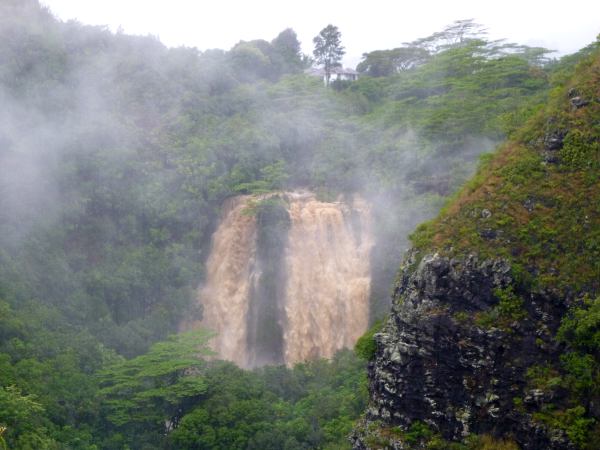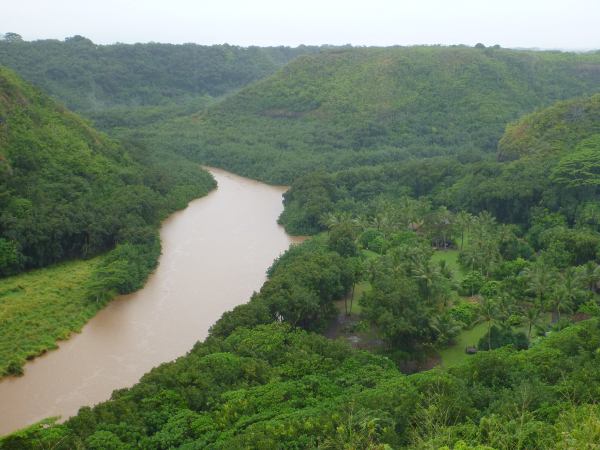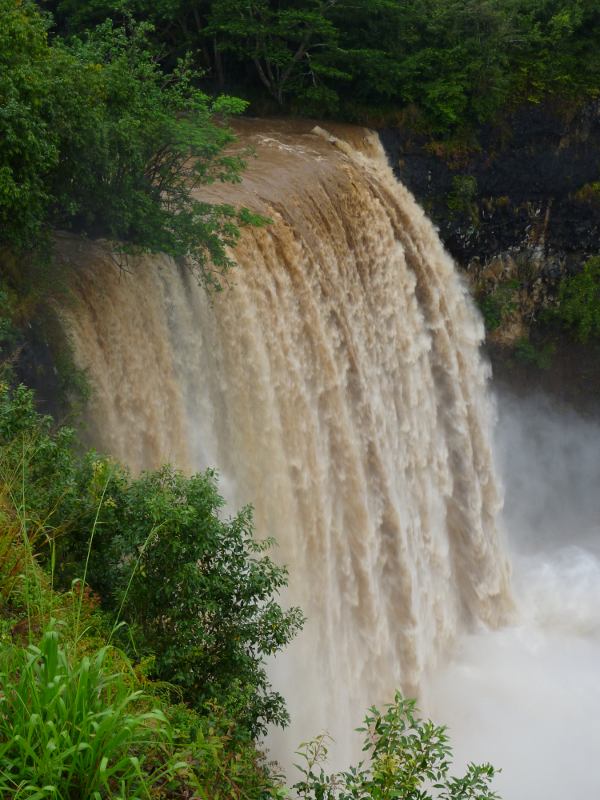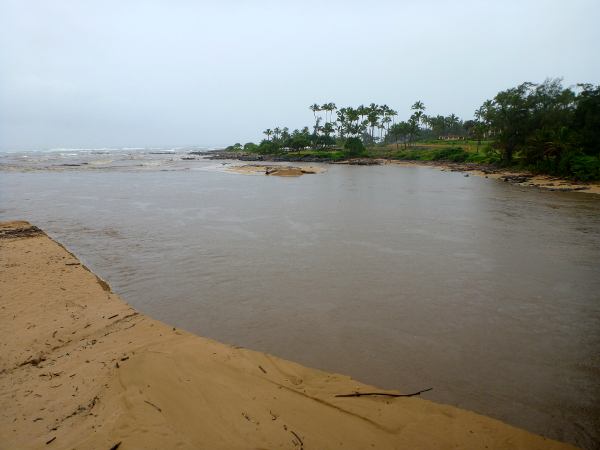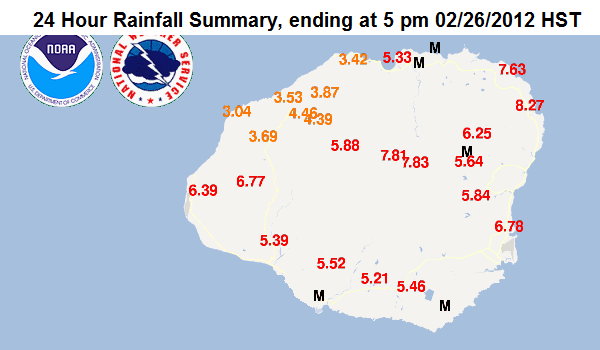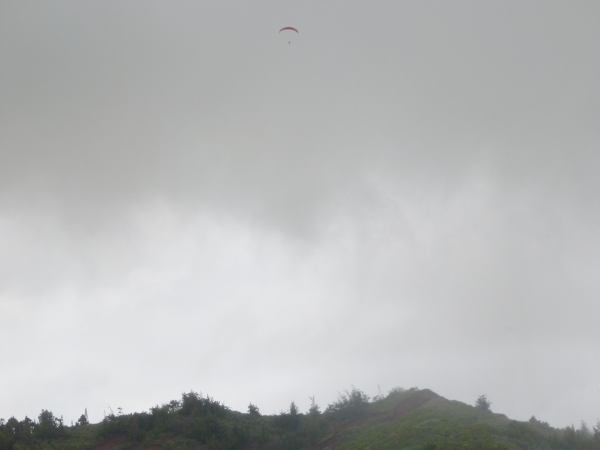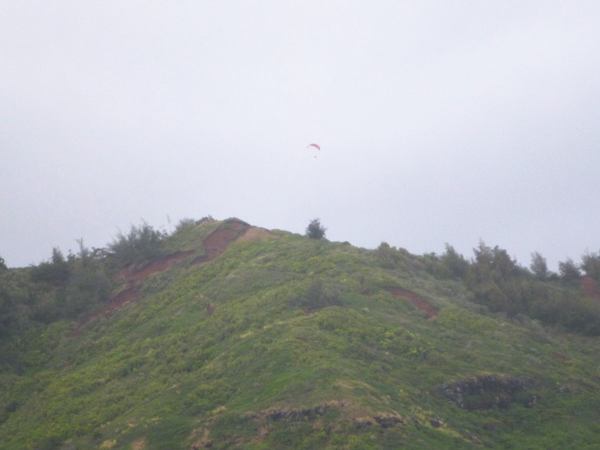Monday’s storm was really intense, but as the previous week, the normal weather came back fairly quickly. By Tuesday, there was hardly any rain on the coast, Wednesday and Thursday being almost sunny. It did rain more inland, and this created more run-off, but nothing like Monday’s fury.
First, some YouTube videos that are finally getting uploaded after the storm, starting with Opaeka’a falls and some other very temporary waterfalls:
You know, I did go looking for the waterfalls I had once seen on Nounou, but there were always too many clouds in the way.
Then there are the kids that found a wet hill to surf on. East-side residents can probably guess where this is:
And finally, what it was like to drive in the rain. I’ve seen more than one video where the driver is filming, but we’ll assume they were driving slowly to begin with.
That last one is rather telling, because the main damage from the storm was the closure of the Kapa’a Bypass due to a large culvert being eroded and undermining the roadway (photo at The Garden Island)–I wonder how many people drove over it in that condition. The state is working quickly to repair the culvert (HDOT has a release with photos) and reopen the road by next week.
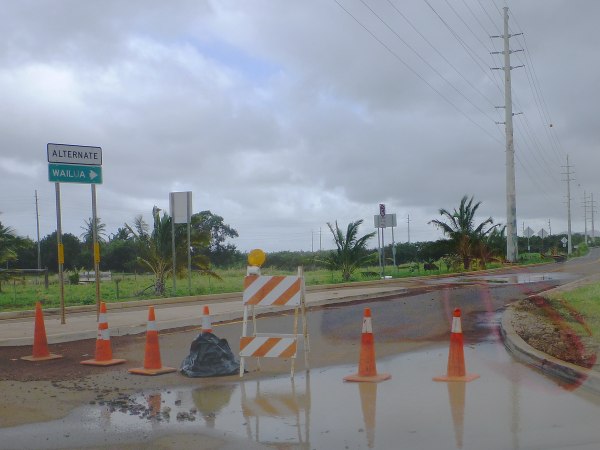
In the meantime, the closure is causing bad traffic on the main road, because inland Kapa’a traffic to the Kawaihau and Kapahi neighborhoods (half the Kapa’a population) is stuck on the main road. Count on at least an extra 20-30 minutes to get through Kapa’a, both northbound and southbound at rush hour. At least in Hawaii, you get rainbows with your traffic jams:
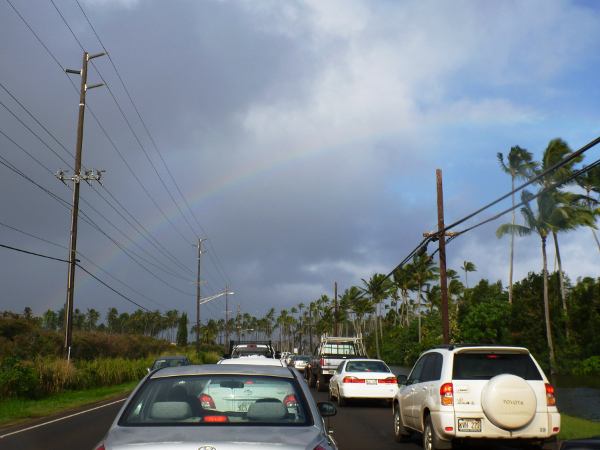
There is another road closure on the main highway in Kilauea, again caused by a culvert eroding. That one took out half of the roadway, but they have a small detour in place and less traffic.
I did get out for the farmer’s market, and took Kamalu road behind the Sleeping Giant to avoid the traffic. I could tell I wasn’t the only person on the back roads. Do watch out for muddy spots where water washed some dirt over the road.
|
Since I was out and about, I got some photos of the storm aftermath. Water was still flooding the side-streets down by the Coconut marketplace on Wednesday, but by today, there were only little lakes in the low-lying grass:
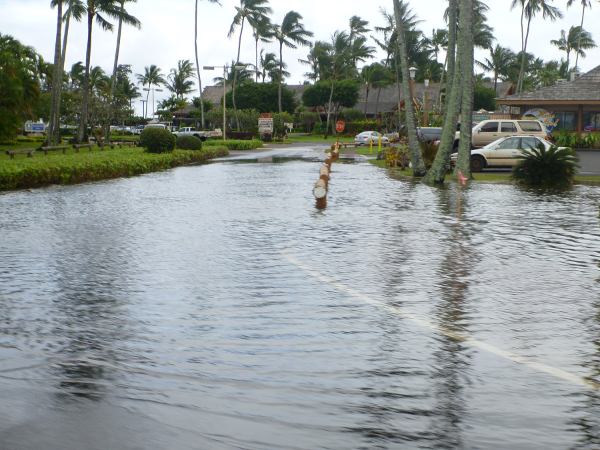

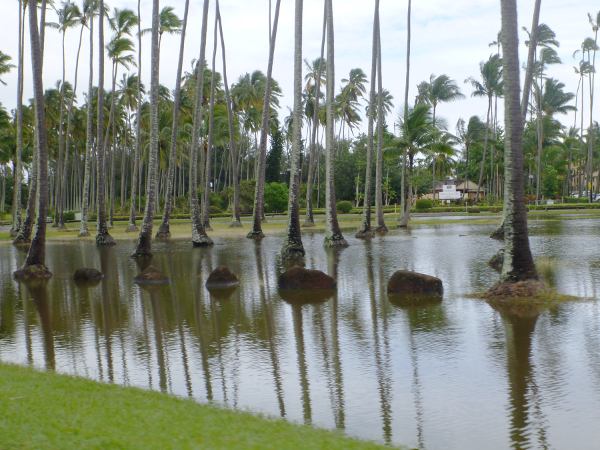
On the road to Lihue, the low lying areas around the county jail were flooded, including their vegetable gardens and outside exercise yard. You can see the drainage ditch in the forground overflowing.
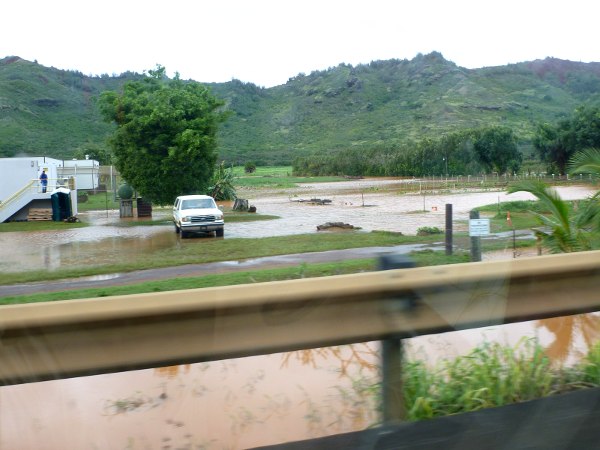
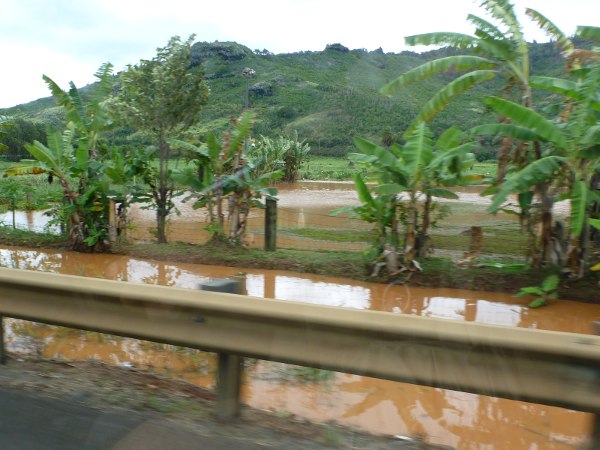
On Kuamo’o Road, I stopped to see Opaeka’a falls again. The flow was somewhat diminshed, and the water no longer so brown, but the things to notice in this picture are the trees in between the two flows that were washed over and hanging on by their roots.
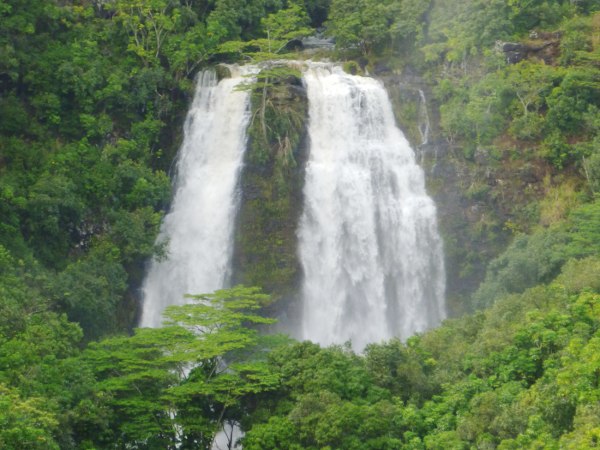
Driving up Olohena Road, we were treated to this nice waterfall. Most of the water from this little stream is diverted into an irrigation ditch, so it’s usually just a trickle. And this area wasn’t even visible until they cleared out all the hau bush a few years ago.
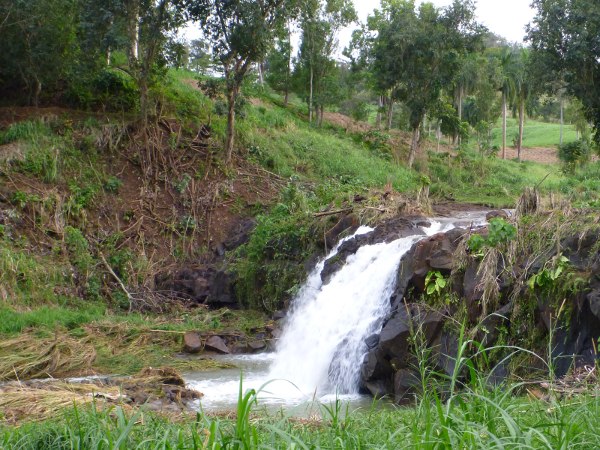
And here’s the irrigation ditch diversion just upstream. Like all the little streams in the area, the vegetation got scoured and the mud banks were eroded one or two feet higher than the normal flow.

I went all the way up to the arboratum, but of course the truck in the water had already been removed. Flow was still high, almost as deep as a tire, which is still probably enough to push a car off the crossing. Heed the signs, people:
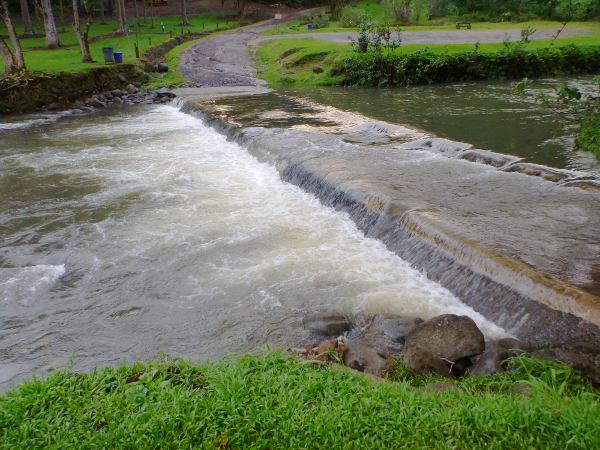
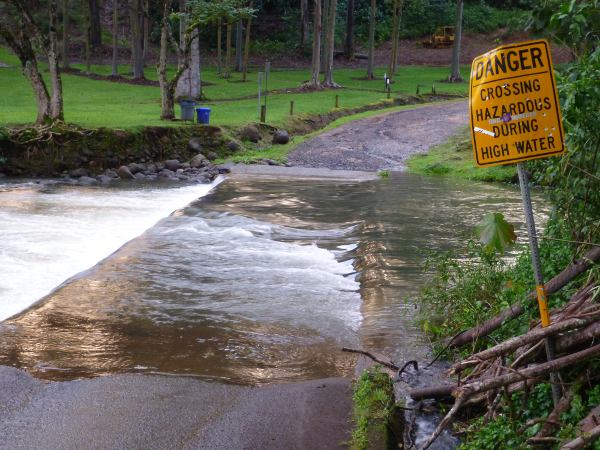
Another consequence of the flood seems to be the stream gauge further inland on the other branch of the Wailua river. It stopped recording even before Monday’s huge peak, and the graph shows a malfunction indicator. I guess we’ll never really know the actual height of the water, unless somebody goes to read it off the markings on the trees.
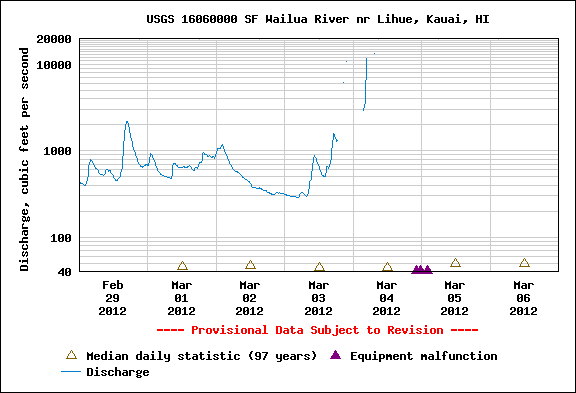
Source: USGS stream gauge data
|
||
|
Finally, I wanted to check on the rock pools at Lydgate. They were not as full of large debris as I imagined, because it looks like the storm swell overflowed the pools on the south side by the beach and carried away some of the branches.
|
||
|
Overall, the damage in the aftermath of the storm was minor. Some roads are being repaired, some people in Hanalei have real flood damage, and I do have some leaks in my roof to deal with. But for the size of the storm and amount of water that flowed, it seems like it could’ve been much worse. I expected to hear people talking about how they made it through, but instead most of the people I overheard were talking about the next storm already, due on Friday. We shall see.





